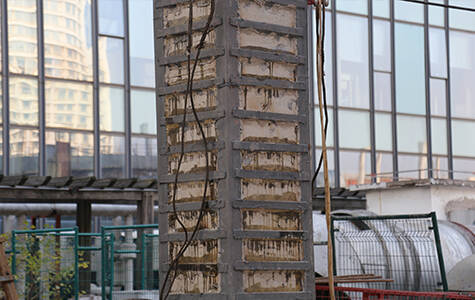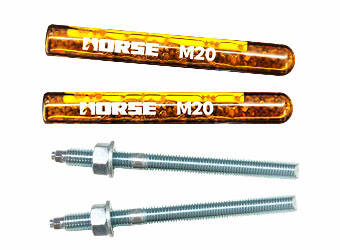Solutions
Horse Construction offers full range of structural strengthening materials with technical supports, documentation supports, products supports, project supports.
Column Strengthening Using Steel Plate


When the concrete structure has been used for a certain period of time, corrosion will occur, and the steel will also corrode. In this case, it must be reinforcement or reconstruction.
Most of the column structure is also a concrete structure. For column reinforcement, stick steel plate reinforcement is often used. Bonded steel plate reinforcement not only causes no burden in space, but also has high economic benefits, so it is very common. So, what is the specific process when the columns are reinforced with bonded steel plate? What should I pay attention to?
Fine analysis of the whole process of column strengthening using steel plate
1. Paste surface treatment
(1) The concrete surface should be chipped off the whitewashing layer to remove grease and dirt. Then use an angle grinder to remove the 1-2mm thick surface layer, use leveling glue to repair the larger depressions, and blow off the floating dust with compressed air after polishing. Finally, wipe the surface with a cotton cloth dipped in acetone and wait until the adhesive surface is completely dry.
(2) The sticking surface of the steel plate should be roughened and derusted with an angle grinder until it is polished and shiny. If it is clean before use, just wipe it with a dry cloth. Otherwise, wipe the surface with a cotton cloth dipped in acetone and wait until it is completely dry.
2. Drill bolt holes
Expansion bolts can be used for pressure fixation, and it is necessary to drill holes to fix the expansion bolts at a suitable position on the reinforcement member.
3. Adhesive preparation
The building structure adhesive consists of two components A and B. Take a clean container and a weighing instrument to mix according to the instructions, and mix with a mixer for about 5-10 minutes until the color is uniform. It is best to mix in the same direction when mixing, try to avoid mixing with air to form bubbles, and the location should be well ventilated.
4. Glue and paste
After the adhesive is prepared, apply it on the treated steel plate surface (or concrete surface) with a grease knife. The glue section should be triangular, with a thickness of about 3 mm in the middle and about 1 mm in thickness at the edges. Then paste the steel plate on the surface of the concrete, fix it with the prepared fixed pressure system, and apply pressure appropriately to the extent that the glue is just extruded from the edge seam of the steel plate.
5. Inspection
(1) A small hammer can be used to lightly hit the sticking steel plate to judge the sticking effect from the sound, and it can also be tested with a ultrasound instrument. If the effective bonding area of the anchoring area is less than 90%, and the effective bonding area of the non-anchoring area is less than 70%, the steel plate should be peeled off and pasted again.
(2) Load inspection can also be used for important components. Generally, the standard value of load to the normal load is adopted. The test results are more intuitive and reliable, but the cost is higher and the time-consuming is longer. Requires jack or counterweight (commonly used sandbags, bricks), dial indicator, crack microscope, weighing apparatus.
6. Maintenance
After reinforcement, the steel plate should be protected with 20mm thick M15 cement mortar, or it can be protected with anti-rust paint to avoid corrosion of the steel.
Precautions for column strengthening using steel plate
1. The quality of the cement is the key to the success of the bonding steel reinforcement. Therefore, the quality of the cement must be strictly controlled. The cement must be high-strength, durable, and elastic, and its strength must be greater than the strength of the corresponding reinforced member.
2. In order to ensure the firm and effective bonding of the steel plate, the width and thickness of the steel plate must be controlled.
3. Use a spatula to apply the adhesive patch on the treated concrete surface and steel plate at the same time. The thickness is 1-3mm, and the middle is thick and the edge is thin. After the steel plate is glued, it must be strictly ensured that there is no hollow drum, otherwise the steel plate should be peeled off, glued and re-attached.
4. Consider the anti-corrosion treatment measures of steel plate after construction.
You can find anything here you are in need of, have a trust trying on these products, you will find the big difference after that.

High-strength anchor bolt with vinyl resin as main materials, composed of selected quartz sands, curing agents and glass tubes

Two-component epoxy modified epoxy structural strengthening adhesive for bonded steel plate to concrete

Modified epoxy resin structural perfusion adhesive, specifically for supporting adhesive bonded steel reinforcement